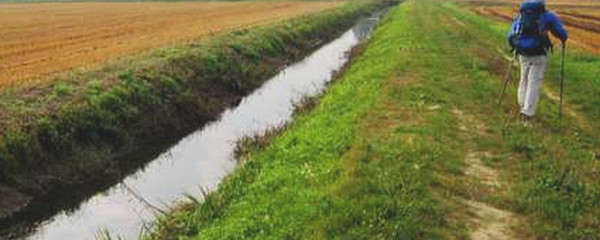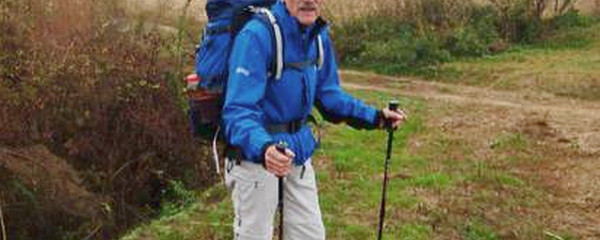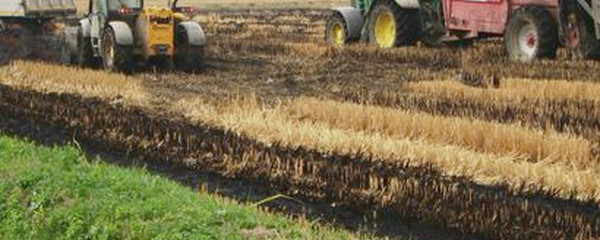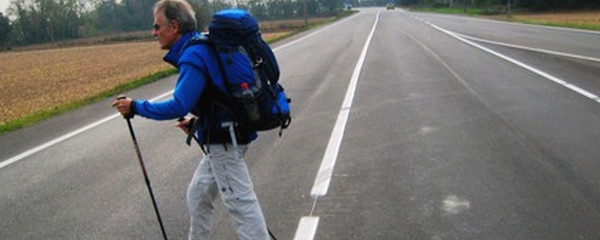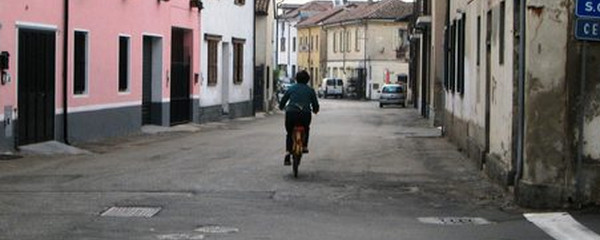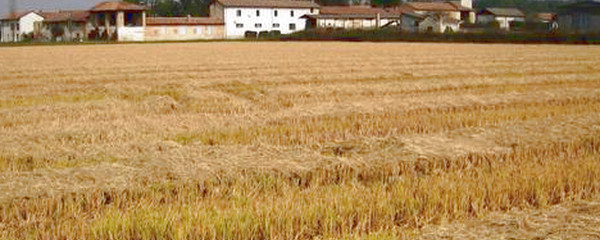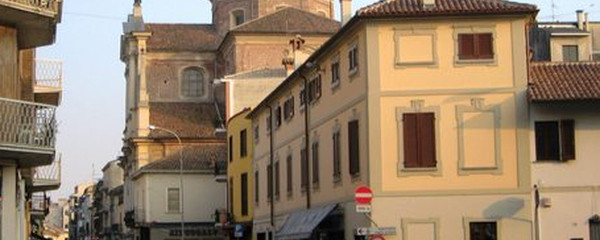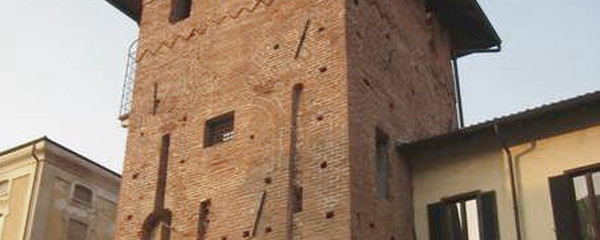Navigation

unterwegs kurz nach Mortara

allgegenwärtige Bewässerungsanlagen
When leaving Mortara, we cross the «Torrente Arbogna» and may remember, that the day before, another river we crossed had almost a similar name. Soon afterwards, we will see the «Abbazia Di Sant´Albino» on our right hand side, a monastery which used to be a popular pilgrim destination in the Middle Ages.
Even today, we will only come accross one middle sized village on our trail, It is Tromello. When leaving that place, we hike through a small forest named «Parco Lombardo Valle del Ticino», a great name. At Garlasco, our today's destination, the church «Santa Maria Assunta» is the prime highlight. This church built during the 18th century shows a valuable baroque style architecture inside.
Note(s)
The «Via Francigena» is one of the 3 main christian pilgrimage trails of the Middle Ages, the main axis leading from Canterbury to Rome. This documentation currently covers the most frequented section from Lausanne to Rome.
Anmerkungen
Die «Via Francigena» ist einer der 3 christlichen Pilgerwege des Mittelalters, dessen Hauptachse von Canterbury in England nach Rom führt. Diese Dokumentation umfasst vorerst den Abschnitt von Pontarlier nach Rom.
Tipp des Autors
Die Etappen sind in dieser Dokumentation Vorschläge, die jeder Pilger seinen Wünschen anpassen kann. die technischen Daten betreffen aber immer die Annahme, diese Etappen würden jeweils an einem Tag absolviert.
Orte entlang des Weges
MoMortara - Torrente Arbogna - Abbazia Di Sant´Albino - Subdiramatore - Cascina Barza - Cascina Roventino - Cascina San Colombano - Tromello - Via Cascini - Parco Lombardo - Garlasco

